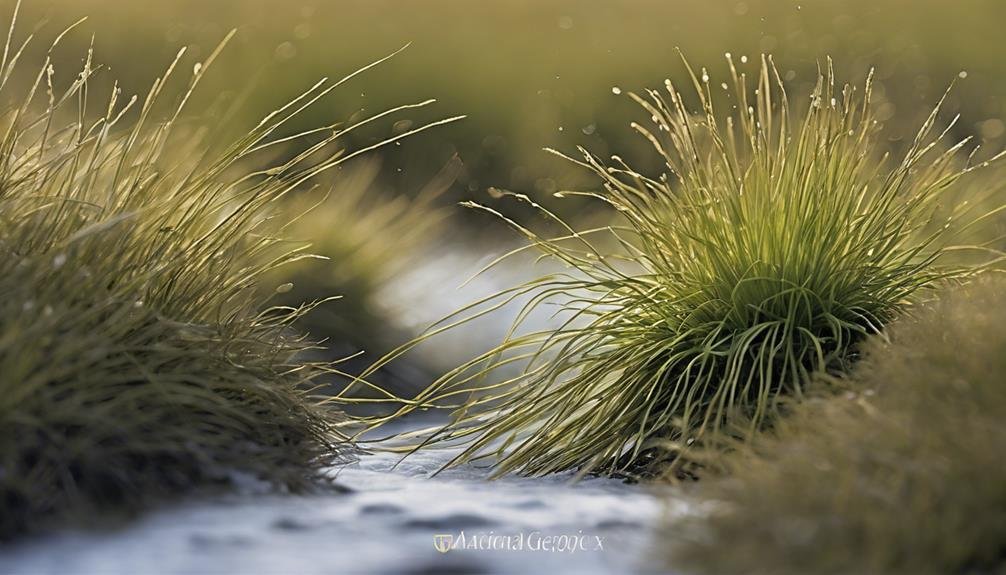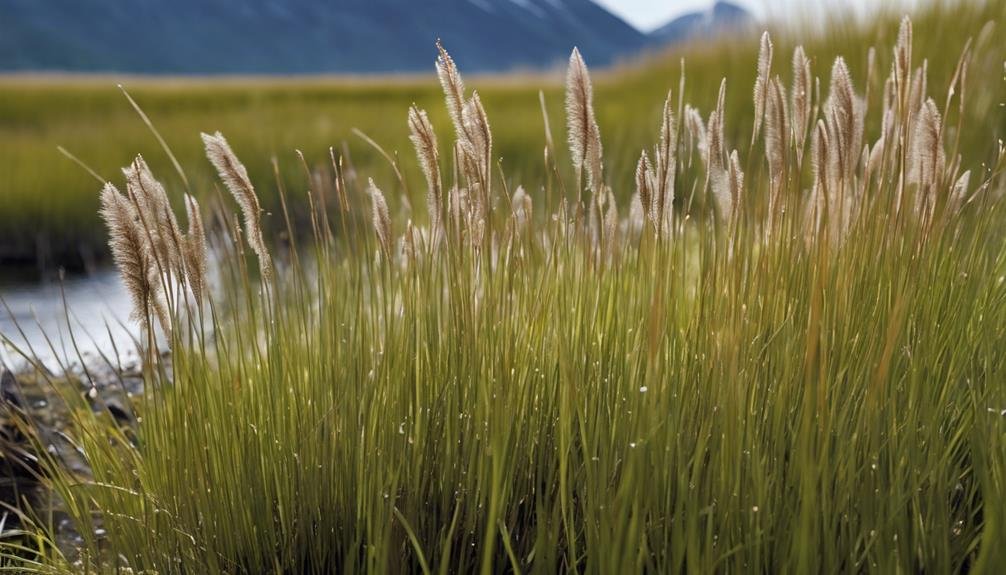Why is the diversity of Carex species significant for ecosystems and what challenges does it face? This question invites an exploration into the remarkable world of the Carex genus, known for its extensive variety of species and its pivotal role in supporting diverse ecosystems.
The Carex genus stands as a testament to nature’s intricacy, with around 2,000 species scattered across the globe. These sedges, often confused with grasses due to their similar outward appearances, are more than meets the eye. Their ecological value is immense, playing crucial roles in habitat stabilization and providing food and shelter for various wildlife species.
However, this genus is not immune to threats, with habitat loss posing a significant challenge to its survival. The loss of Carex habitats raises concerns about biodiversity and the stability of ecosystems they support. The decline of these sedges could have far-reaching effects on the wildlife that depends on them and the overall health of natural habitats.
This overview sets the stage for a deeper analysis of the ecological importance of Carex species and the urgent need to address the challenges they face.
Key Takeaways
Key Takeaways:
- The Carex genus is crucial for ecological and aesthetic values in global landscapes.
- Carex species play a vital role in habitat stability and wildlife support.
- The versatility of Carex in gardening shows its adaptability to different environments.
- Habitat destruction poses a significant threat to Carex diversity and its ecological roles.
- Preserving Carex is necessary for maintaining biodiversity and benefits to human-enjoyed spaces.
Sedge Overview
Unique Traits of Sedge Species
Sedges, particularly those within the Carex genus, are easily distinguishable from true grasses due to their triangular stems and unique reproductive structures. This genus encompasses a wide variety of species, amounting to roughly 2000 types that flourish in diverse environments globally.
As members of the Cyperaceae family, these herbaceous perennials are celebrated for their variety in colors, textures, and adaptability, which renders them a valuable asset in both wild and designed landscapes. The distinct morphology of Carex species not only differentiates them visually but also plays a pivotal role ecologically, supporting wildlife, promoting ecosystem health, and aiding in restoration efforts across their natural habitats.
Carex Genus: A Symbol of Evolutionary Success
The Carex genus showcases remarkable adaptability across a range of conditions, with certain species demonstrating a particular resilience in arid environments. This versatility is a testament to the evolutionary prowess of the Carex genus, allowing its members to establish themselves across a broad spectrum of ecosystems.
In the realm of gardening and landscaping, Carex species are increasingly recognized for their drought tolerance. This attribute positions them as sustainable alternatives to traditional grasses and highlights their utility in environmentally friendly landscaping practices. Some Carex cultivars have been awarded for their contributions to green gardening, underscoring the genus’s significance in promoting sustainable design principles.
Leaf Structure and Arrangement

Diving into the Intricacies of Carex Leaf Characteristics
Exploring the Carex genus unveils the leaf structure and arrangement as pivotal traits for singling out these sedges from the rest of the plant world. The Carex species stand out in the sedge family due to their unique and varied leaf features.
Carex leaves resemble grass in their narrow, elongated form, which might cause some confusion with true grasses. Yet, on closer inspection, several distinctive features become apparent:
- The presence of both a blade and a sheath on the leaves is a distinctive trait of the sedge family.
- The leaf structure varies across Carex species, presenting a spectrum of textures and hues.
- An alternate arrangement of leaves along the stems gives them a distinctive look.
- This specific arrangement is crucial for the identification and classification of the species.
- The variation in leaf structure helps in distinguishing Carex species from other sedges.
The thorough examination of leaf structure and arrangement not only facilitates the identification of Carex species but also showcases the extensive diversity and adaptability within this genus, emphasizing its importance in plant taxonomy and ecology.
Global Presence

Global Adaptability of Carex Species
Carex species have a powerful ecological role, thriving in diverse climates from the freezing arctic tundra to the high-altitude wetlands. These sedges, belonging to the Cyperaceae family, have shown exceptional adaptability by becoming key components in wetland ecosystems. Their ability to flourish in wet habitats, especially those with water depths up to 50cm, highlights their versatility in occupying various environments worldwide.
Limited Presence in Warm Regions
While Carex species have a vast distribution, their presence is less common in tropical lowlands and sub-Saharan Africa. This pattern suggests a preference for environments that are cooler and more humid, underlining the plants’ adaptability to specific ecological niches rather than a universal presence in all types of climates.
Contribution to Restoration Projects
The wide distribution of Carex across the globe isn’t just a testament to its adaptability but also to its potential in ecological restoration projects. Native sedges, including Carex, are highly valued in these endeavors for their ecological roles and benefits. Their adaptability makes them ideal candidates for restoring damaged wetland ecosystems, where they can help improve water quality and provide habitat for wildlife.
Significance in Ecosystems and Conservation
The global presence of Carex is a clear indicator of its ecological importance and its role in conservation efforts. Studying and conserving Carex species is crucial for maintaining the health of wetland ecosystems around the world. Their adaptability and utility in restoration projects make Carex species a focal point for conservation within the Cyperaceae family.
Habitat Stabilization

Root Systems’ Significance in Soil Cohesion
The Carex genus, with its dense and fibrous root systems, is instrumental in soil cohesion. These roots intertwine to hold soil particles tightly, preventing them from being washed away by water or blown away by the wind. This natural mechanism is a cornerstone in combating soil erosion, ensuring that the land remains fertile and stable.
Vital Role in Wetland Ecosystems
Wetlands are critical for biodiversity, water purification, and flood control. Here, Carex species thrive, their roots interlocking to form a solid foundation that supports the delicate balance of these ecosystems. Their presence is key to the resilience and health of wetland habitats, contributing to the overall ecological diversity and functionality.
Natural Defenses Against Coastal Erosion
Coastlines are particularly susceptible to erosion due to constant wave action. Carex plants, growing densely along these areas, act as a living barrier. They dampen the energy of incoming waves and trap sediments, helping to maintain clear water and reduce the impact of erosion on shorelines.
Enhancing Riparian Zone Stability
Carex plants are also beneficial in riparian zones, areas adjacent to rivers and streams. Their root systems help to secure the riverbanks, preventing them from crumbling and collapsing into the water. This not only stabilizes the habitat but also ensures cleaner waterways by minimizing sediment runoff.
Erosion Control Solutions in Varied Landscapes
Across different landscapes, Carex species serve as natural, efficient tools for erosion control. Their adaptability to various environments makes them invaluable in restoration and conservation projects, offering a sustainable alternative to artificial barriers and chemicals.
Habitat Loss Impact

Impact of Human Activities on Carex Habitats
Urbanization, agriculture, and deforestation are reducing the land available for Carex species, leading to habitat loss. This destruction mainly affects wetlands, which are vital for many Carex species. The loss of these areas not only impacts the ecosystems supported by Carex but also removes their natural environments.
Grasslands and Meadows: The Shrinking Spaces for Carex
The expansion of human activities and changes in land use have led to the decline of native grasslands and meadows. These areas are essential for the diverse Carex species, and their reduction limits the availability of suitable habitats. Changes in temperature and precipitation due to climate change further challenge these plants, accelerating the loss of their habitats.
Habitat Fragmentation and Genetic Diversity
Habitat fragmentation isolates Carex populations, leading to a decrease in genetic diversity. This decrease is alarming because genetic diversity is key to adapting to environmental changes and resisting diseases. With reduced genetic diversity, the Carex genus faces difficulties in adapting to rapidly changing conditions, threatening its survival.
Frequently Asked Questions
Are Carex and Sedges the Same?
Are Carex and Sedges the Same?
Question: Are Carex and sedges the same thing?
Answer: Yes, Carex is a genus within the sedge family, making it a type of sedge. Carex is notable for being the largest genus within this family, encompassing a wide range of species with varying characteristics and habitats. They play a significant role in both scientific research and landscaping due to their diverse varieties and ecological importance.
Is Carex Sedge Invasive?
Is Carex Sedge Invasive?
Q: Can Carex sedge become invasive in gardens?
A: Carex sedge is not typically invasive. Effective sedge management, avoiding disturbance of natural habitats, and selecting native Carex species are key to ensuring they do not spread aggressively in garden settings. It’s important to choose the right Carex varieties to maintain balance in your garden.
Does Carex Like Sun or Shade?
Q: Does Carex prefer sun or shade?
A: Carex species have different preferences; some thrive in full sun, while others grow better in shade. This adaptability makes them suitable for various garden environments.
Does Carex Grass Spread?
Does Carex Grass Spread?
Question: Can Carex grass expand its growth area?
Answer: Yes, Carex grass can spread through rhizomes and runners, which allows for the formation of dense colonies over time. The rate and manner of spread are influenced by the soil conditions and how the grass is maintained.
Can Wintergreen and Sedges Thrive in Similar Environments?
Wintergreen and sedges can thrive in similar environments, particularly in cooler, moist woodland areas. Both plants share an affinity for well-drained yet damp soils. Wintergreen medicinal properties have cemented its value, especially in traditional medicine, while sedges contribute to their habitats by stabilizing soil and enhancing biodiversity.
What Role Do Sedges (Carex) Play in Heath Ecosystems?
Sedges (Carex) are vital in heath ecosystems, playing a key role in water retention and soil stabilization. They often grow alongside the ericaceae family heath, providing essential habitat for wildlife and promoting biodiversity. Together, they create a dynamic system that supports various plant and animal species while improving soil health.
Conclusion
The Carex genus embodies significant ecological and aesthetic contributions to landscapes around the world. Its wide array of species serves important roles, from providing stable habitats to supporting diverse wildlife populations.
A closer examination of its leaf structure and widespread occurrence underscores its flexibility and value in different gardening environments. Yet, the threat of habitat destruction looms large, endangering its variety and the ecological functions it performs.
Safeguarding these adaptable plants is vital for preserving biodiversity and the myriad benefits they extend to both natural ecosystems and spaces enjoyed by humans.


